Allow me to introduce you to the Green-Tailed Sunbird (Aethopyga nipalensis), a bird renowned for its strikingly vibrant appearance, particularly its mesmerizing green tail and captivatingly bright blue head. This avian wonder belongs to the Nectariniidae family, commonly known as sunbirds, and its allure is nothing short of spectacular.
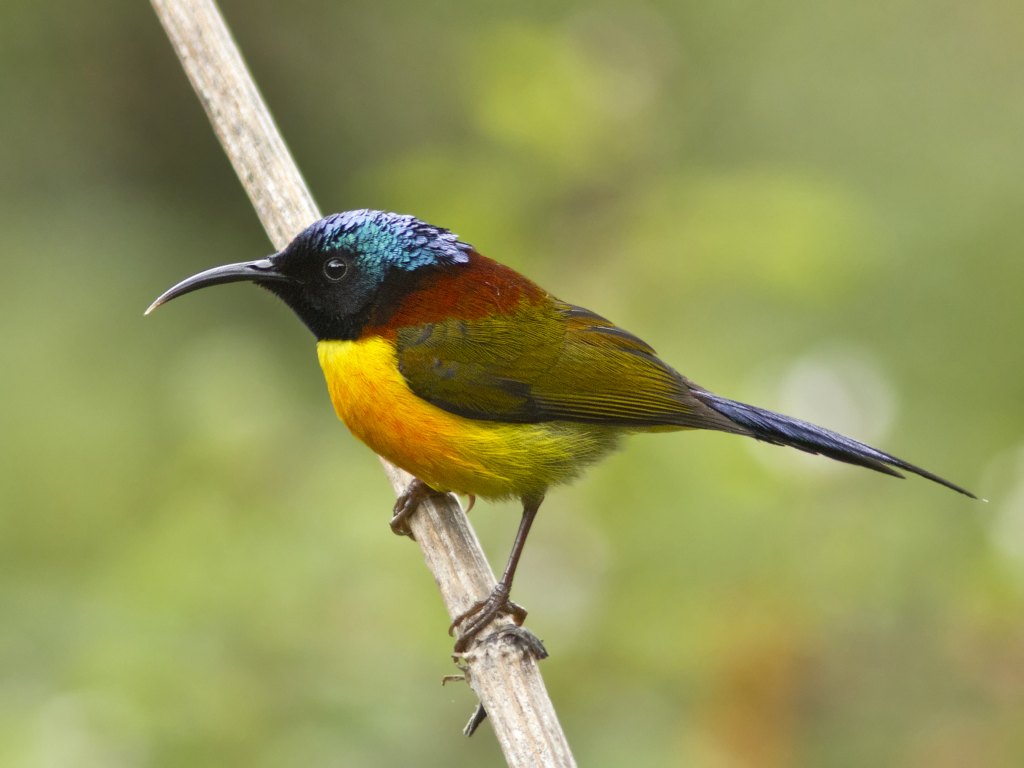

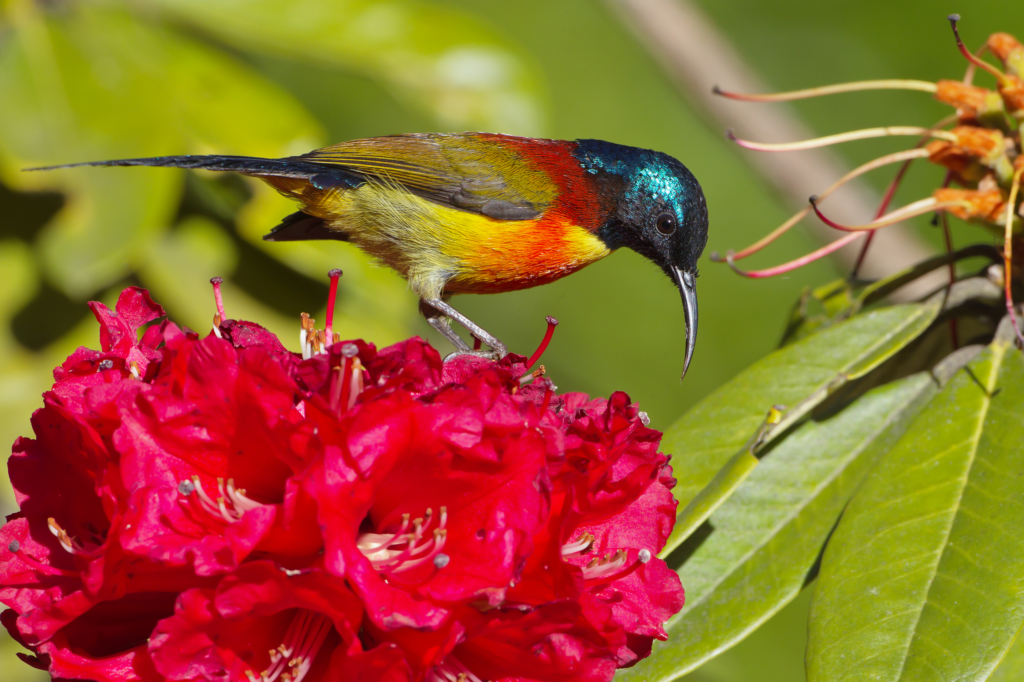

In stark contrast to the male’s resplendent appearance, the female Green-Tailed Sunbird exudes a more subdued elegance. Her plumage is primarily a shade of dull olive green, complemented by a gray head, and her belly and chest boast a gentle yellowish tint. Her tail tapers towards a more square finish, making her distinguishable from her male counterpart.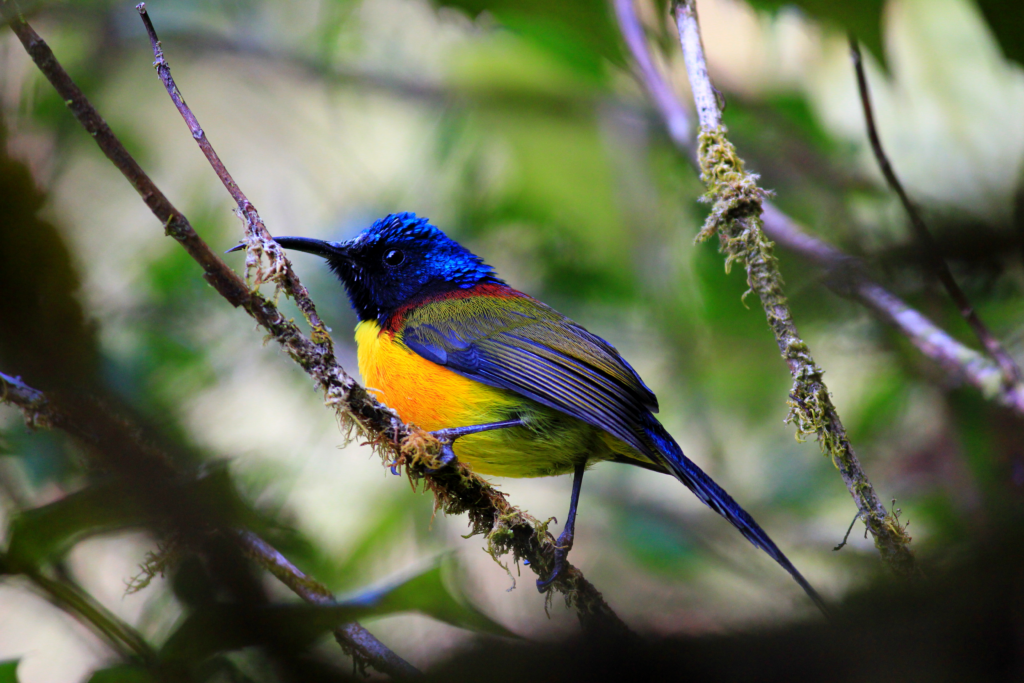

This enchanting bird can be found in the picturesque regions of Nepal and the northern areas of the Indian subcontinent, with its presence extending eastwards into select parts of Southeast Asia. It prefers to inhabit temperate forests and subtropical or tropical moist montane forests, where it finds the ideal environment to thrive.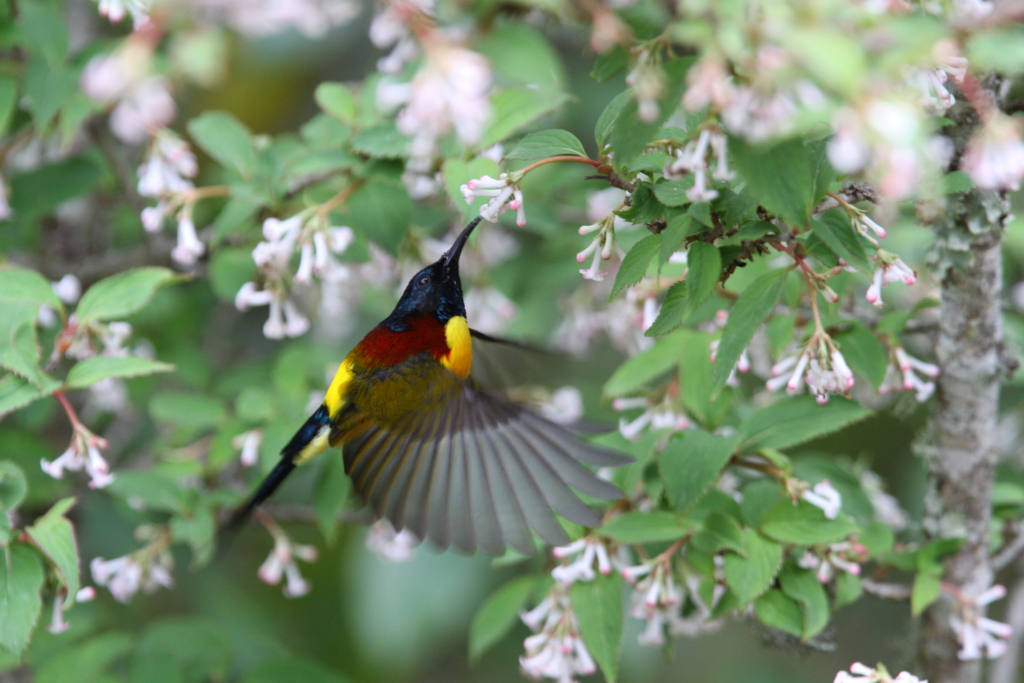

As for its dining preferences, the Green-Tailed Sunbird specializes in sipping nectar from the abundant flowers in its habitat, showcasing its role as an essential pollinator. However, it also includes insects and spiders in its diet, displaying its versatility when it comes to sourcing sustenance.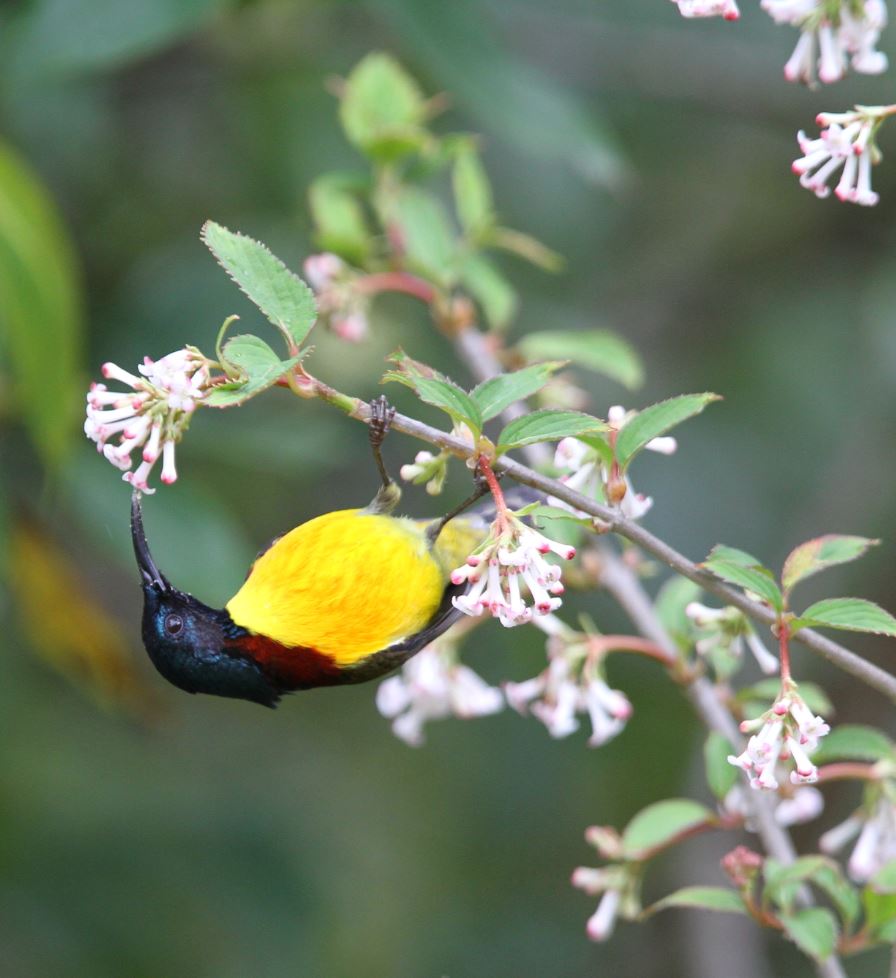

The breeding season for these magnificent birds falls between April and June. During this time, the female takes on the task of building an oval-shaped nest suspended from a branch. The clutch size typically comprises two to three eggs, which she diligently incubates.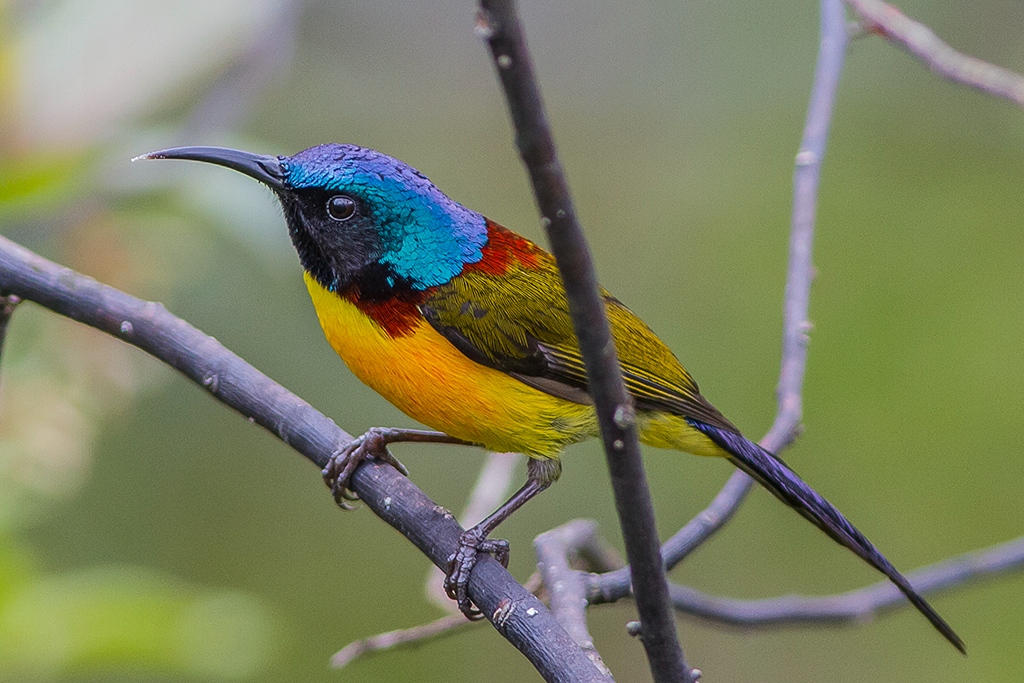

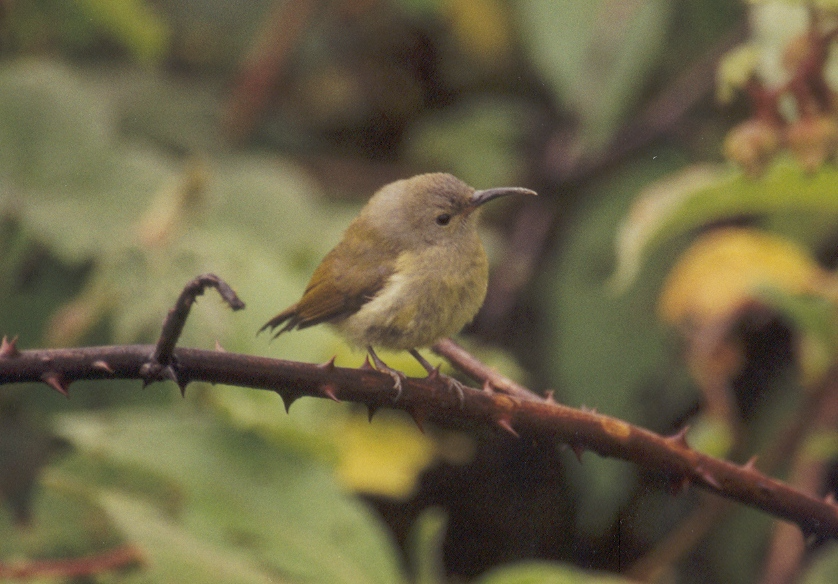

Fortunately, the Green-Tailed Sunbird currently enjoys a relatively secure status, with no imminent threat to its existence. It has been classified as “Least Concern” on the IUCN Red List, signifying that its populations are stable and thriving. Nonetheless, the conservation of its habitat remains vital to ensure that this jewel of the avian world continues to grace our natural landscapes with its dazzling presence.




